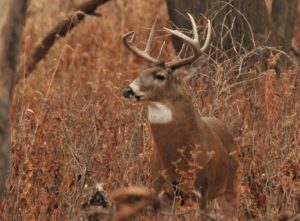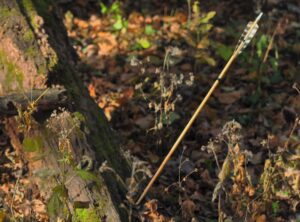Photography courtesy of Lowell Washburn, all rights reserved.
For Iowa deer hunting enthusiasts, November is the grandest time of the year. Nothing stands in its shadow. By the time November arrives, the annual rut has slammed into overdrive. Secretive, nocturnal habits have changed. Restless, edgy, and itching for a scrap; broad beamed bucks are on the daytime prowl. Locked into a perpetual search for does, anxious stags brazenly trot through forest, down fencelines and across cut corn. But things don’t always go as planned. Instead of friendly does, wandering bucks often find rival males instead. When that happens, the Iowa woodlands echo with the resounding clash of dueling antlers. The larger the combatants, the deadlier the duel.
For Iowa archers, November deer hunts often provide a seemingly endless array of highs and lows. Regardless of the outcome, the hunts frequently become a high-octane, adrenaline-charged outdoor adventure. There’s good reason for all the excitement.
Legends of the fall, Iowa’s behemoth stags have achieved global notoriety. Whether you judge them in terms of body weight or in total inches of antlers, there is no disputing that Iowa bucks achieve heart stopping proportions. To date, Iowa has produced 19 of the all-time top deer ever recorded. That’s more top bucks than is currently listed by any other state or Canadian province.
But even now, putting your tag on the buck of your dreams represents an uphill proposition. Getting within twenty-yard bow range of a mature deer remains the ultimate woodland challenge. When things do come together, it’s a nerve-jangling sight to behold. As that Wall Hanger finally swaggers into view, many archers simply crack under the strain. After drilling the Bull’s Eye on backyard deer targets all summer, a hunter may easily miss the entire animal once the moment of truth arrives. It’s called Buck Fever and is the best explanation as to why so many new broadheads end up imbedded in tree stumps rather than deer.



 Tom Cope
Tom Cope Sue Wilkinson
Sue Wilkinson Susan Judkins Josten
Susan Judkins Josten Rudi Roeslein
Rudi Roeslein Elyssa McFarland
Elyssa McFarland Mark Langgin
Mark Langgin Adam Janke
Adam Janke Joe Henry
Joe Henry Kristin Ashenbrenner
Kristin Ashenbrenner Joe Wilkinson
Joe Wilkinson Dr. Tammy Mildenstein
Dr. Tammy Mildenstein Sean McMahon
Sean McMahon